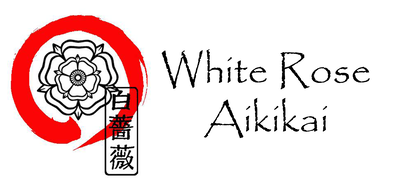 I have been surprised on a number of occasions by just how badly some students take a failure. On the other hand I have been happy with the mature way in which some have reacted to a disappointment. (I should point out that I have never given a grading in Britain and am referring to my experience in Hong Kong.) I remember that there was one fellow I failed and I actually expected that he would give up Aikido when I informed him. On the contrary, he responded with a smile as though saying “Not to worry: there’s always the next time”.
I have been surprised on a number of occasions by just how badly some students take a failure. On the other hand I have been happy with the mature way in which some have reacted to a disappointment. (I should point out that I have never given a grading in Britain and am referring to my experience in Hong Kong.) I remember that there was one fellow I failed and I actually expected that he would give up Aikido when I informed him. On the contrary, he responded with a smile as though saying “Not to worry: there’s always the next time”.
Some may feel that they have been treated unfairly in that they have held their present grade much longer than some who have advanced to the next one. But have they been practising, say, just twice a month as distinct from, say, two or three times a week as in the case of those who have moved ahead of them? Another important factor to consider is what level of instruction is one receiving. In other words, some may be under the watchful eye of a senior yudansha, whereas others receive their instruction from perhaps a 2nd or 1st kyu. Some, too, use class time more constructively than others and may even practise at home.
Once, on failing a lady, I asked her how she felt she had done. Since I felt she had not been even near the borderline I did not expect her answer “very well”. So what does this tell us? Well, to me, that the examiner sees a lot more than the examinee.
Let’s advance on this. Student ‘A’ makes a number of mistakes in the techniques but get everything else (distance, timing, coordination, manner, etc.) right. Student ‘B’, on the other hand, makes no mistakes in the techniques but gets everything else wrong. If we observe a 3rd kyu, shodan, sandan and rokyudan executing shiho-nage, although basically they are all doing the same thing, there are differences between them. Then there are those who almost demand to be graded in spite of having reached a stage where they do not seem to be able to progress any further for reasons such as past injuries, age, attendance or attitude. In the case of such people I sometimes wonder why in practising with people of the same grade or of lower grades, they cannot evaluate themselves. Then there is the opposite of this when students of a certain grade refuse to go further. In the days when I practised Judo there was one fellow I remember who stopped taking grades at 1st kyu although he probably reached nidan level. He used to delight in flinging dan grades around!
In awarding grades I do take into consideration age, in that I do not expect a 58 year old student to perform in the same way as a 20 year old. As for yudansha I look for a lot more than technique as I feel that a hakama in the wrong hands, so to speak, can do a lot of damage to Aikido, especially in areas where a shodan grade is quite significant.
Some years ago we had in Hong Kong a very good, very big, very strong student whom everyone enjoyed practising with. In other words, nobody was afraid of him. To me this said a lot when I came to grade him shodan. In Hong Kong all those wishing to try for shodan must first discuss it with a senior grade (we have 5 yondan) – usually the one who has most influenced them.
Hong Kong is often referred to as the crossroads of Asia, it being the stopping-off point to Japan, Taiwan, China, Thailand, the Philippines, etc. On visiting the dojo I have often found that we had a visitor from abroad. Over the years some that sported hakama in my opinion were not of dan grade standard. Nevertheless I have always welcomed them and not made them feel uncomfortable. After all, it is those who awarded such grades who should be accountable. I constantly tell our students that if they visit another country and are below par, it is me that it reflects on.
In conclusion let me say ‘do not worry about grades unduly: they will come with the years’. Some of you may feel – as once I did – that you will never wear a hakama. But excluding accidents or other unforeseen circumstances, you will.
Kenneth Cottier Shihan 2002.

